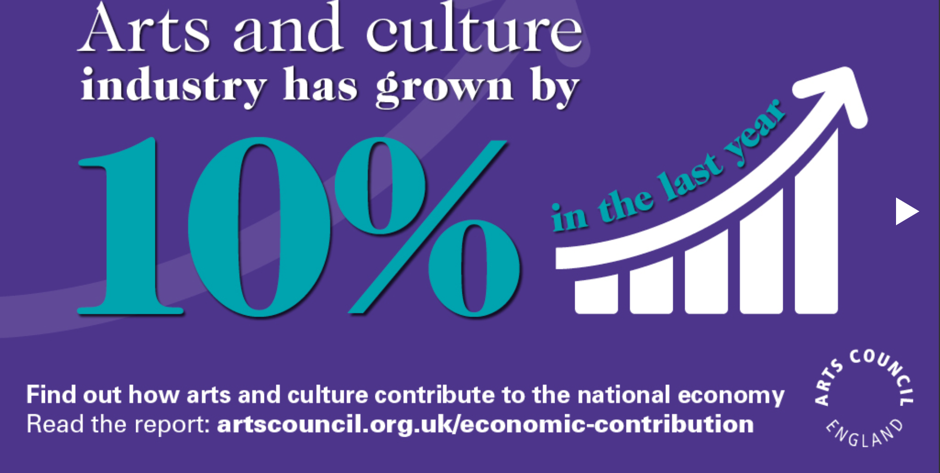In the Influential Fundraiser training, =mc uses its powerful five stages of influence model and teaches you the 15 tools you need to learn to apply systematically and sensitively for success. These techniques have been used to secure at least six £1M+ gifts in the last five years, as well as countless smaller ones.
The latest version of the programme involves a number of insights from neuroscience and behavioural economics. One of these insights involves the importance of social proof.
Why social proof? How about impact data? After all there’s a lot of discussion in the sector about the importance of impact analysis and reporting as a way to persuade donors and supporters to do more. Annual reports are now often rebranded as impact reports. Many agencies use nice infographics to reinforce their message. Here, for example, is a typical example from the Arts Council of England.

So my questions are: 1. who is this meant to influence? and 2. does it work anyway? I’m often, as in the ACE example above, not sure who it’s meant to influence… There might even be a negative impact. “If the arts are growing so fast, maybe they don’t need support…”
But I am sure this is not an effective way to influence any individual donor. And Social Proof will. Social Proof demonstrates that “other people, like you or that you respect, are doing this.” This simple connection is a massive encouragement to do the same.
Let’s demonstrate this with an experiment originally run by Robert Cialdini, respected Professor of Psychology at Arizona State University.
He persuaded a major US hotel chain to trial different messages in hotel rooms to see which would have the most powerful effect in getting hotel users to reuse their towels. This would help save the planet and, coincidently reduce the hotel’s laundry and room cleaning costs.[1]
Message 1: focused as do many of these appeals on the environmental benefits of reuse. 35% of guests opted to re-use their towels. This was used as a the ‘control’ – or baseline – for the experiment.
Message 2: focused on social proof. This missed out the environmental message and stated ‘most people in this hotel re-use their towels.’ 44% of guests reused their towels. That’s almost 10% more people.

Message 3: the researchers tested variations of the social proof message over several weeks. They tried to target it more to ‘people like you.’ They adapted specific messages by mentioning gender ‘women/men’, ‘citizens’, ‘environmentally concerned individuals’, ‘guests in this hotel’ or finally, ‘people who stayed in this room.’ Five variants in total.
Which message had the greatest impact in changing behaviour? Most people think the answer is one containing some sense of social identity – either ‘gender’ or ‘citizen.’ In fact, it was the one saying ‘most people who stay in this room reuse their towels.’ That produced a 49.3% reuse rate – 15% more than the original environmental message they’d normally use. It’s not about the cause, it’s the social proof context.
There’s a host of similar data around, from experiments and real life, that reinforces this principle:
[1] The experiment covered thousands of users in different combinations over an extended period. You can read the detail here
http://persuasion-and-influence.blogspot.com/2014/02/hotel-towels-power-of-social-proof.html